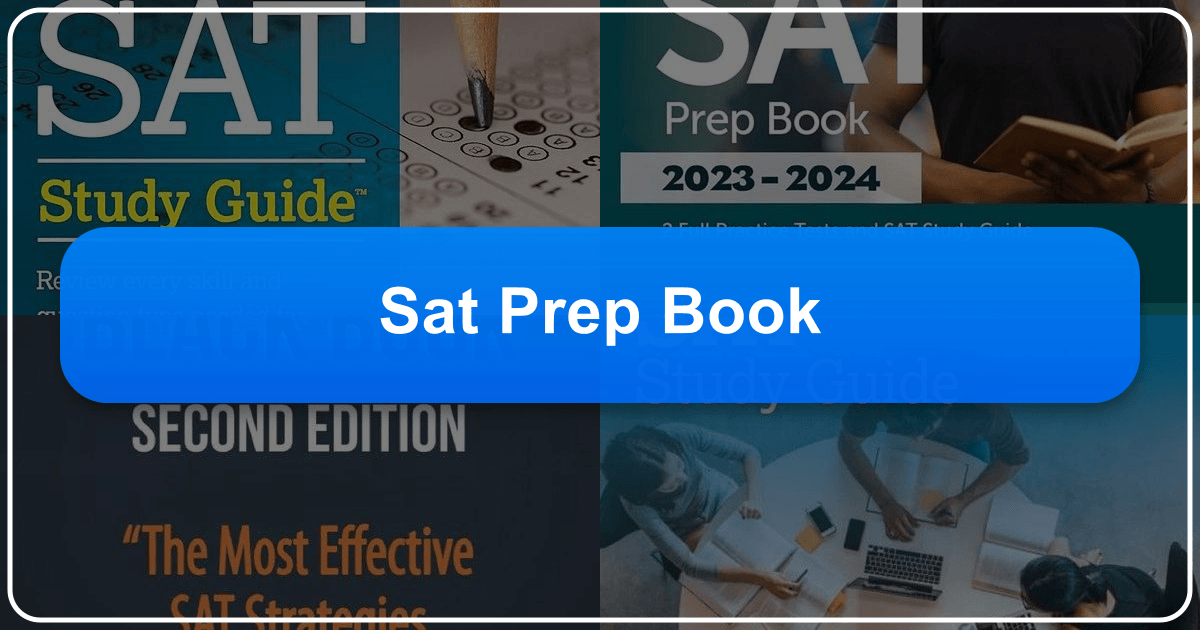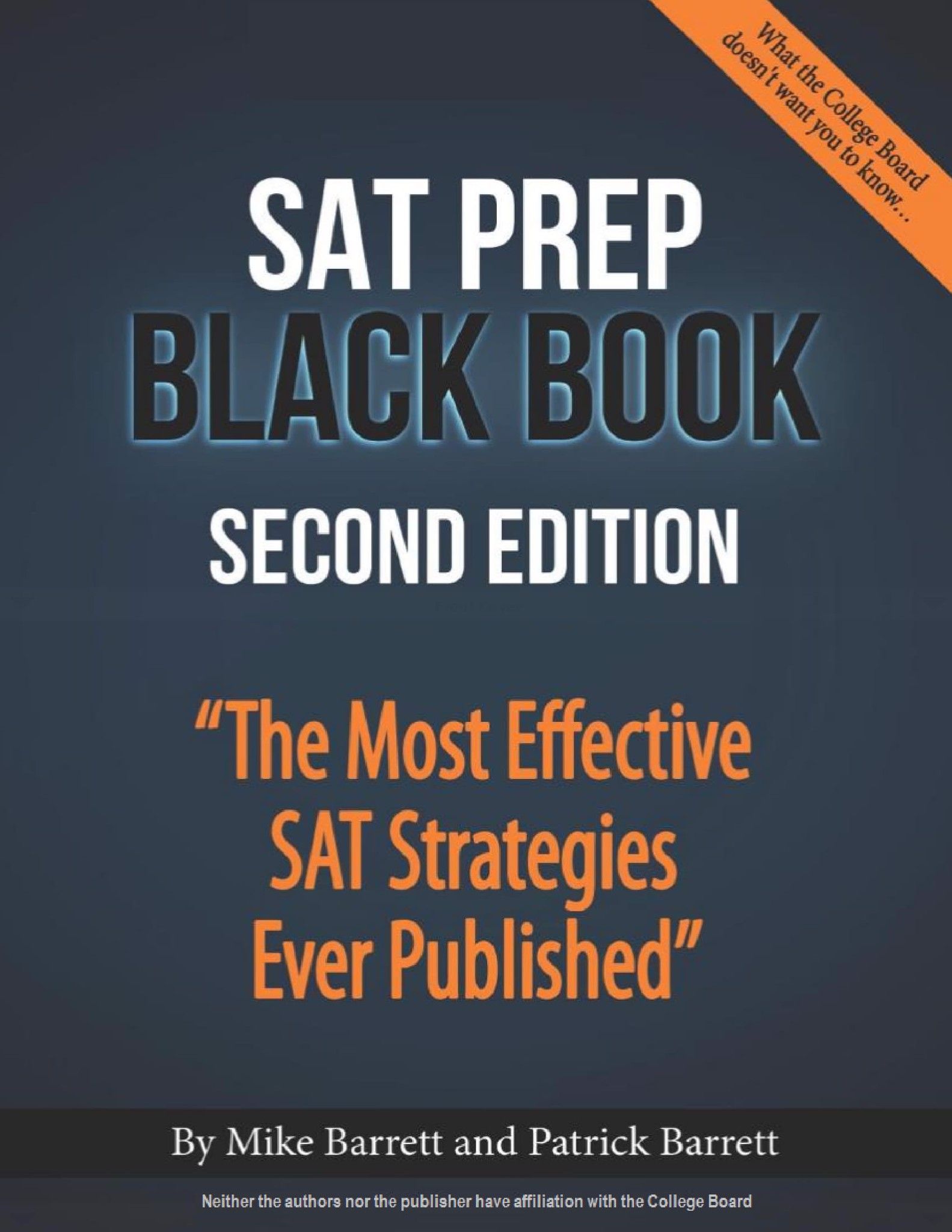SAT Prep Book: A Comprehensive Guide to Choosing the Right Resource

The SAT (Scholastic Assessment Test) is a crucial standardized test for high school students aiming for college admission in the United States. A significant portion of the application process hinges on achieving a high SAT score. Consequently, selecting the right SAT prep book is a critical decision for students embarking on this challenging journey. This article delves into the multifaceted aspects of SAT prep books, considering various genres, authors, learning styles, library resources, and the broader cultural impact of the SAT itself. We’ll explore the features that make some books stand out from the crowd and how to make an informed choice to maximize your preparation efforts.
1. Navigating the World of SAT Prep Books: Genres and Types

The market is saturated with SAT prep books, each boasting unique features and approaches. Categorizing them helps streamline the selection process. Genres can broadly be classified as:
1.1. Comprehensive Prep Books:
These books offer a complete package, covering all aspects of the SAT, including reading, writing and language, and math sections. They often include practice tests, strategies, and in-depth explanations. Examples include the official guides published by the College Board and comprehensive guides offered by companies like Kaplan and The Princeton Review. These tend to be thicker books, reflecting their exhaustive coverage. The choice between these publishers often comes down to personal preference and learning style, as the content varies slightly. Some students find Kaplan’s approach more engaging, while others prefer the more straightforward method of the Princeton Review.

1.2. Subject-Specific Prep Books:
Students with specific weaknesses in a particular SAT section (reading, writing, or math) might benefit from targeted subject-specific books. These books offer focused practice and strategies for that specific area. This approach allows for concentrated effort on areas needing improvement, supplementing a comprehensive approach or addressing specific difficulties. For example, students struggling with the math section might select a book focusing solely on math concepts and problem-solving techniques.
1.3. Practice Test Books:

These books primarily consist of practice tests, often mirroring the actual SAT’s format and difficulty level. While lacking detailed explanations found in comprehensive books, they provide valuable practice under timed conditions. Students focused on timed test-taking skills and applying learned strategies will find these resources beneficial. The College Board’s official study guide is a good example, containing multiple practice tests created by the test-makers themselves.
1.4. Strategy-Focused Prep Books:
These books prioritize teaching test-taking strategies and techniques, rather than simply reviewing academic content. They often focus on time management, efficient problem-solving approaches, and identifying question patterns. This can be helpful for students who have a solid academic foundation but need to refine their test-taking strategies. These often come in conjunction with comprehensive guides or subject-specific ones.
2. Authorial Voice and Approach: Finding the Right Fit
Beyond the genre, the author’s approach significantly influences a book’s effectiveness. Some authors adopt a straightforward, concise style, ideal for students who prefer direct instruction. Others might incorporate a more engaging narrative style, making the learning process more enjoyable and memorable. Consider the following factors when evaluating an author’s approach:
2.1. Writing Style:
An author’s writing style directly impacts readability and comprehension. A clear, concise style enhances understanding, whereas dense, overly technical writing can be frustrating. Reading sample excerpts from different books helps assess which style suits your learning preferences.
2.2. Explanation Depth and Clarity:
The quality of explanations for practice questions is crucial. Effective explanations go beyond simply providing the correct answer; they clarify the reasoning behind the solution, addressing common misconceptions and errors. This allows students not just to get answers right, but to understand why those are the right answers, strengthening their foundational knowledge.
2.3. Integration with Other Resources:
Some authors seamlessly integrate their books with online platforms or additional resources. This offers a hybrid learning experience, enhancing the effectiveness of the book’s content. For example, some books provide access to online practice tests or video explanations, enriching the learning experience.
3. Reading and Learning Strategies: Maximizing Educational Value
The effectiveness of an SAT prep book depends significantly on the student’s learning style and how they utilize its resources. Consider these points:
3.1. Active Learning:
Instead of passively reading, students should actively engage with the material. This includes taking notes, summarizing concepts, and actively working through practice questions. Active learning ensures better retention of information and solidifies learned concepts.
3.2. Identifying Weaknesses:
Students should utilize practice tests to pinpoint weaknesses in specific subject areas. This allows them to allocate more time and effort to areas requiring improvement. Focusing on weaknesses optimizes study time, improving efficiency and maximizing score potential.
3.3. Utilizing Feedback:
Reviewing incorrect answers and understanding where errors occurred is vital for improvement. The effectiveness of the book’s explanation becomes crucial here. Students should analyze feedback to adjust their problem-solving approaches, improving future performance and ensuring long-term learning.
3.4. Developing Effective Study Habits:
Consistency and planning are critical. Students should create a study schedule that incorporates regular practice and review. Establishing a routine and consistent study habits boosts the effectiveness of the prep book and improves their overall preparation.
4. Library Resources: Accessing Supplementary Materials
Public and digital libraries offer valuable resources beyond commercially available books. Libraries can provide:
4.1. Official SAT Study Guides:
Many libraries carry the official SAT study guides published by the College Board. These guides provide authentic practice tests and valuable insights into the test’s format and content. This is a cost-effective way to access high-quality preparation materials.
4.2. Subject-Specific Books and Practice Materials:
Libraries often house a wide range of supplemental books and practice materials covering specific subjects tested on the SAT. This offers the flexibility to address individual needs and strengthen specific subject areas.
4.3. Online Resources and Databases:
Many libraries offer access to online databases and learning platforms containing SAT prep materials. This provides a comprehensive resource hub beyond physical books. These databases often provide additional support, including practice problems and educational videos, supplementing the content of any purchased book.
5. Cultural Impact and SAT Prep: Beyond the Score
The SAT extends beyond a mere academic test; it carries significant cultural and societal implications:
5.1. Literary Influence:
The SAT’s reading section exposes students to a diverse range of literature, expanding their vocabulary and comprehension skills. Beyond test preparation, this contributes to a broader literary understanding, enhancing critical thinking.
5.2. Adaptations and Communities:
The SAT’s widespread use has spurred numerous adaptations in education, leading to support communities and supplementary learning resources. These communities provide invaluable peer support and create environments for collaborative learning, enhancing preparation.
5.3. Awards and Recognition:
High SAT scores can lead to academic awards and recognition, further impacting students’ educational trajectories. This creates additional motivation for students to prepare effectively, while highlighting the significant role the SAT plays within the education system.
Conclusion: Choosing Your SAT Prep Path
Choosing the right SAT prep book involves careful consideration of various factors. The book’s genre, the author’s style, the student’s learning approach, supplementary resources from libraries, and the broader cultural impact of the SAT all contribute to the overall preparation experience. By understanding these aspects, students can make informed choices, optimize their study strategies, and ultimately enhance their chances of achieving a high SAT score. Remember, the best SAT prep book is the one that best fits your individual learning style and study habits. Use this guide to navigate the wealth of resources available and choose a path to success.